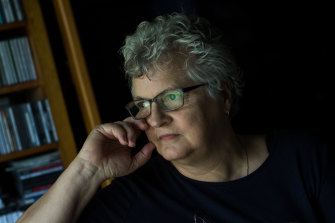What is EMDR? The ‘bizarre’ therapy helping Prince Harry heal
SMH - Samantha Selinger-Morris
But what does EMDR, which was once called “yet another of the crazes that have always plagued psychiatry” (by trauma expert Bessel van der Kolk) – and which has in the last couple of years been labelled everything from “strange” to “funny” and “sounding like witchcraft” – accomplish? And why is it growing in popularity?
When Prince Harry spoke earlier this week about how he has undergone a controversial type of psychotherapy to heal from longstanding trauma and anxiety, the world took notice.
What exactly, we all wondered, is Eye Movement Desensitisation and Reprocessing (EMDR)? What happened when he closed his eyes, crossed his arms, and tapped his own shoulders while thinking of traumatic memories – as we saw in a scene from one of his therapy sessions in the documentary series, The Me You Can’t See? The Duke of Sussex said he has turned to therapy to resolve fears and anxiety he’s suffered since his mother’s death in a car accident in 1997 when he was 12. (“London is a trigger, unfortunately,” he says, in one episode. “Because of what happened to my mum, and because of what I experienced and what I saw.“)
But what does EMDR, which was once called “yet another of the crazes that have always plagued psychiatry” (by trauma expert Bessel van der Kolk) – and which has in the last couple of years been labelled everything from “strange” to “funny” and “sounding like witchcraft” – accomplish? And why is it growing in popularity?

For Charmaine Belterman, EMDR therapy finally provided relief from trauma after decades of other treatments.CREDIT:JUSTIN MCMANUS
For Charmaine Belterman, the answer is simple: EMDR did what seven years of psychiatric treatment, cognitive behavioural therapy (the gold standard psychological treatment), and mindfulness training could not: put an end to decades of depression, periodically feeling suicidal, and various “breakdowns” that made her life hell.
“I test it, I bring up a trauma, and there’s nothing there,” says Belterman, a 64-year-old retired nurse from East Warburton, Victoria, by which she means that she feels “no disturbance” when she recalls the traumatic memories that used to plague her. She has lots. A survivor of childhood sexual abuse and other traumas, she spent more than five decades experiencing “a helluva lot of” restlessness, hopelessness, and self-doubt. The mother of three lacked confidence, and, at one point, covered all the mirrors in her house with newspaper because she didn’t want to look at herself. Eventually, she was diagnosed with Complex Post Traumatic Stress Disorder.
But now? “I’m sitting here and I’ve got goosebumps, I’m excitedly shocked,” she says of her ability to recall a traumatic memory and feel no discomfort after three years of EMDR treatment. “I honestly believed, sincerely, I would not get over this until the day I die. I thought you know what, this is coming to the grave with me.”

Prince Harry, practising EMDR therapy in the Apple TV documentary “The Me You Can’t See”.CREDIT: APPLE TV
The key is the combination of a patient focusing on the crucial aspects of a traumatic memory – the picture, its meaning, and the associated feelings – while completing an additional “bilateral movement” task, says Dr Christopher Lee, one of Australia’s leading researchers of EMDR and an EMDR practitioner. Usually, this means the patient moves their eyes, from side to side, by following their therapist’s moving finger. Others, like Prince Harry, make tapping motions.
Practitioners believe that the bilateral movements disturb a person’s ability to focus on the memory – which has its roots in science. Over time, this helps the brain reprocess it as just another memory that doesn’t produce an emotional response. With the therapist’s coaching, the memory gains new, positive thoughts and emotions. (For instance, instead of horror and disgust a person might feel pride that they have been strong and survived.)
Read the full article Here.
1346